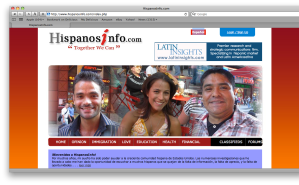By Margaret Rainwater
In her article on “Questioning Your Collection,” Toby Rajput discusses The Council on Interracial Books for Children’s (CIBC) “10 Quick Ways to Analyze Children’s Books for Racism and Sexism” originally published in 1974 and offers a set of questions for school media specialists and youth librarians to consider when evaluating their collections. The CIBC’s recommendations are listed below.
10 Quick Ways to Analyze Children’s Books for Racism and Sexism
1. Check the illustrations.
2. Check the storyline.
3. Look at the lifestyles.
4. Weigh the relationships between people.
5. Note the heroes.
6. Consider the effect on a child’s self image.
7. Consider the author or illustrator’s background.
8. Check out the author’s perspective.
9. Watch for loaded words.
10. Look at the copyright date.
Recently, for a children’s literature class I am taking, my professor assigned two book reviews on children’s books with stereotypes using the CIBC recommendations as a guide. This turned out to be quite a difficult task. When I asked the youth librarians at my library for some recommendations of stereotypical books, they told me that they had already removed many of the blatantly stereotypical books from their shelves. (In particular, I was looking for a controversial book called The Story of Little Black Sambo by Helen Bannerman.) To find this book and other ones containing stereotypes I had to go another larger library and even then the librarians had a hard time coming up with titles for me.

I have since learned that stereotypes exist in all books to some degree. Take for instance the stereotypes of women wearing an apron or of female librarians with reading glasses. These stereotypes may not warrant pulling a book off the shelves, but what about The Story of Little Black Sambo, which has been called racist due its portrayal of Africans?
I would argue that they do belong in libraries both school and public for two reasons. First, these books have historical significance and are useful in looking at how children’s books have evolved over the years. Second, despite the stereotypical nature of a book, the story or information itself may make a book worth keeping. Toby Rajput, argues that the best way to use these types of books is as vehicles for teaching children to be critical readers. (2009, p. 68) I wholeheartedly agree. Let’s not get rid of the books, but teach children how to recognize the stereotypes in them. As Rajput says, “If all children learn to critically evaluate the books the read, we need never fear any book on our library shelves.” (2009, p. 68)
Discussion Questions:
1) Does your library have The Story of Little Black Sambo (1924 version or earlier)? Have you read it? (If not, I highly recommend it. It’s actually a very cute story minus the stereotypical references.)
2) Do blatantly stereotypical books belong in libraries?
Reference:
Rajput, T. (2009) Questioning Your Collection. Knowledge Quest. 38 (1), 62-69.






